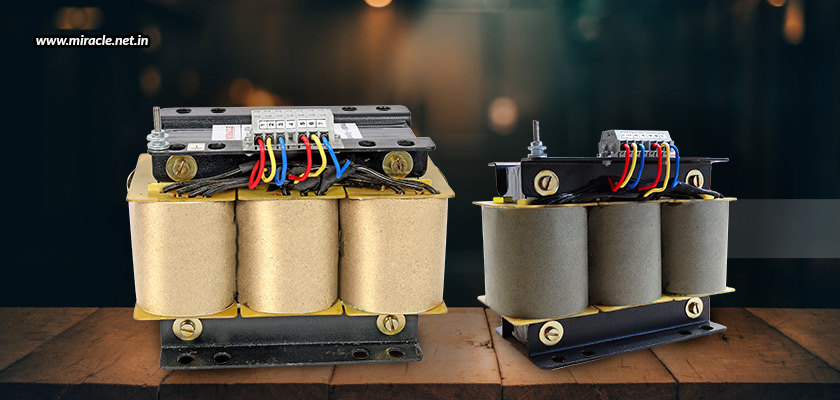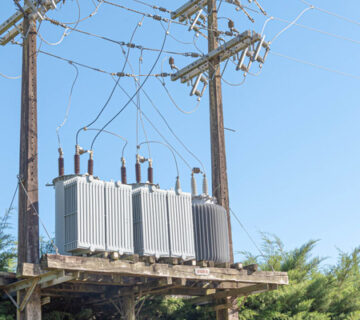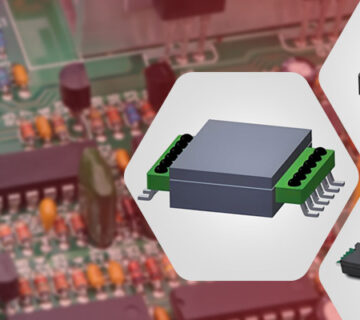Power transformers, the colossi of our electrical infrastructure that guarantee the dependable delivery of electrical energy, are responsible for the transmission and distribution of electricity across cities and nations. However, not all of the energy is transformed; some energy is lost, therefore the efficiency of a transformer cannot be said to be 100%. These losses, which can be mainly ascribed to two things—copper losses and core losses—lead to a decline in the efficiency of the transformers that falls between 95% and 99%. This efficiency of a power transformer holds paramount importance in various aspects, making it a critical factor to consider in the design, selection, and functioning of power transformers in India.
Why does transformer efficiency matter?
- Reduced network losses: As electricity moves from power plants to end customers, electrical networks experience energy losses. Transformers along the transmission and distribution lines that are efficient cut down on network losses, resulting in a reduction in the need for energy generation.
- Energy conservation: Optimizing the consumption of energy is a universal necessity in a time when energy resources are limited and environmental concerns are at the forefront. In order to conserve precious resources, efficient transformers reduce energy losses during power transmission and distribution.
- Heat reduction: Transformers run cooler when their losses are reduced. Cooler transformers are safer and less likely to catch fire because they are less likely to overheat and have insulation degradation.
- Load handling capacity: More powerful loads can be carried by efficient transformers without overheating. The improved load handling capability supports the resilience and stability of the grid.
- Voltage regulation: More dependable and constant voltage regulation is provided by energy-efficient transformers, ensuring that electrical devices receive a steady power supply. This enhances the functionality and durability of the connected equipment.
- Reliability and longevity: When operating, efficient transformers produce less heat, which results in reduced thermal stress. By doing so, the operational lifespan of a transformer can be substantially extended, resulting in fewer premature replacements and the corresponding environmental effects.
- Environmental impact: Each megawatt-hour of power produced leaves behind a certain amount of environmental damage. Reduced energy losses caused by efficient transformers equate to lowered greenhouse gas emissions, carbon emissions, and environmental deterioration. This makes a big difference in maintaining the ecosystem.
The financial impact of transformer efficiency
If the foregoing wasn’t enough, we’ve created a separate section to show that transformer efficiency isn’t only about being environmentally responsible; it also has a direct impact on the financial aspect, which affects utilities, businesses, and consumers equally.
- Lower operating costs: Efficient transformers lower operating costs, such as electricity costs and maintenance costs, for businesses, utilities, and data centres that depend on transformers to power their operations.
- Fewer downtime costs: Less heat generation and more dependable performance lead to less downtime and lower expenses related to operations that are disrupted.
- Reduced energy bills: The most immediate and obvious advantage of efficient transformers is a decrease in energy bills. Consumers simply pay for the energy they use, not for any that is wasted, thanks to the lower losses.
- Incentives and rebates: Many local governments and utilities offer rebates and incentives for utilizing energy-efficient equipment, which may further lower the initial cost of purchasing efficient transformers.
Energy efficiency regulations and standards
You can see how governments and regulatory organizations around the world have come to recognize the significance of transformer efficiency. Transformers must adhere to a number of standards and laws that have been developed, with IEC serving as the Indian standard. International standards have been produced by the International Electrotechnical Commission (IEC), such as IEC 60076, which outlines power transformer efficiency classes. These guidelines are extensively used in many nations, including India. IE1 (Standard Efficiency), IE2 (High Efficiency), IE3 (Premium Efficiency), and IE4 (Super Premium Efficiency) are the four efficiency classes for power transformers as defined by IEC 60076. With each class corresponding to a specific efficiency range, IE3 and IE4 are the most energy-efficient classes.
More than merely a technical need, transformer efficiency is a key element of an ethical and sustainable approach to energy. Effective transformers are essential for resource conservation, cutting carbon emissions, and lowering energy prices since they minimise energy losses. They are crucial elements in the shift to a future with clean Ultimately, by putting efficiency first, we improve the durability and dependability of our electrical infrastructure and help to create a more sustainable and profitable energy landscape. At its core, choosing to invest in energy-efficiency transformers is a decision to sculpt a more efficient and sustainable future. Choose wisely and select only the highest-efficiency power transformers in India offered by Miracle Electronics, one of the most reputed transformer manufacturers both in India and abroad.er and more sustainable energy sources.




